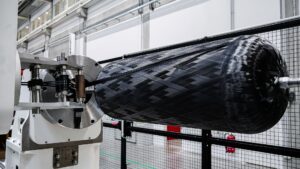
In a groundbreaking development, researchers at YOKOHAMA National University have unveiled an innovative levitation device capable of moving in all directions without friction. This advancement addresses a long-standing challenge in the transport of miniaturized mechanical, electronic, chemical, and biomedical components. Traditional systems such as conveyor belts are hindered by friction, which limits speed and precision. The new device, detailed in the July 2025 issue of Advanced Intelligent Systems, promises ultrafast, agile movement crucial for machine assembly and biomedical applications.
The experimental results exceeded expectations, aligning perfectly with theoretical predictions. The levitation device achieved frictionless movement at speeds over three meters per second on an inclined surface. At a 10° incline, the device demonstrated its effectiveness: it moved freely when levitation was activated, but remained stationary under gravitational force when levitation was off. This success underscores the potential of the device in practical applications.
Innovative Design and Testing
Researchers conducted extensive tests, including the device’s ability to carry weight, a critical factor for its practical use. The device maintained levitation and free movement with a total weight of up to 150 grams, allowing for an additional 43 grams to be carried. Beyond this threshold, levitation and movement ceased, indicating current weight limitations.
The development of this device could have utilized diamagnetic or pneumatic levitation; however, these methods presented limitations due to their reliance on external magnetic and pressurized gas generators. Instead, the team opted for acoustic levitation, which uses sound waves to suspend objects in the air. This choice eliminated floor friction but introduced challenges with cable reliance.
“While acoustic levitation removes floor friction, conventional systems rely on cables that disturb positioning. We solved this by developing an untethered levitation device with a wireless drive circuit, enabling stable levitation height and high-speed, flexible transport,” said Ohmi Fuchiwaki, associate professor and researcher at YOKOHAMA National University.
Technical Innovations
The team integrated a piezoelectric actuator, which converts electrical energy into mechanical force, to generate a squeeze film. This innovation enabled the creation of an omnidirectional, frictionless transport device free from cables or other tethers. The device’s ability to move in any direction without friction marks a significant leap forward in transport technology.
Future Prospects and Applications
Looking ahead, the researchers aim to enhance the device’s levitation efficiency and stability under load and on uneven surfaces. The ultimate goal is to develop a robot using multiple levitation devices and a propulsion mechanism, facilitating the contactless delivery of machine parts, biomedical cells, and other small components.
The research team, comprising Yuta Sunohara, Soushi Ueno, Rintaro Minegishi, Chihiro Sekine, Yuta Kitamura, Yuna Sugiyama, Satoshi Ando, and Ohmi Fuchiwaki from YOKOHAMA National University’s Department of Mechanical Engineering, and Akihiro Torii from the Aichi Institute of Technology’s Department of Electrical Engineering, received support from the Nakanishi Scholarship Foundation, the NSK Foundation for the Advancement of Mechatronics, and the Takahashi Industrial and Economic Research Foundation.
Institutional and Research Context
YOKOHAMA National University (YNU) stands as a leading research institution committed to academic excellence and global collaboration. Its faculties and research institutes spearhead efforts in pioneering new academic fields, advancing research in artificial intelligence, robotics, quantum information, semiconductor innovation, energy, biotechnology, ecosystems, and smart city development. Through interdisciplinary research and international partnerships, YNU continues to drive innovation and contribute to global societal advancement.







